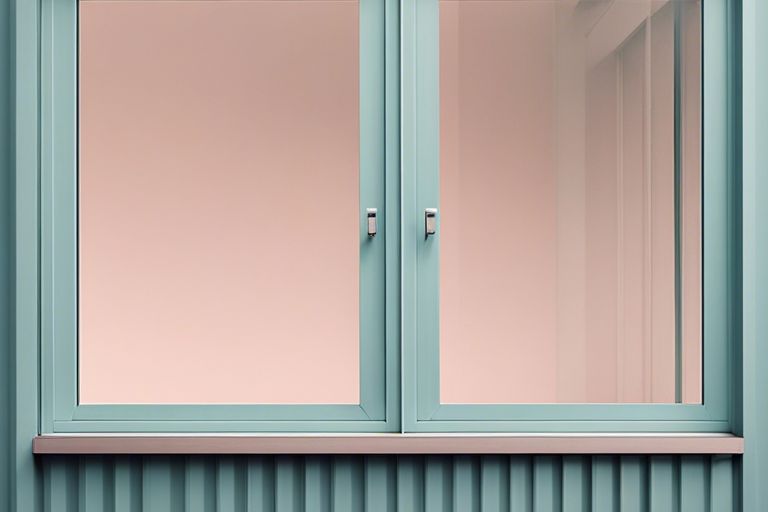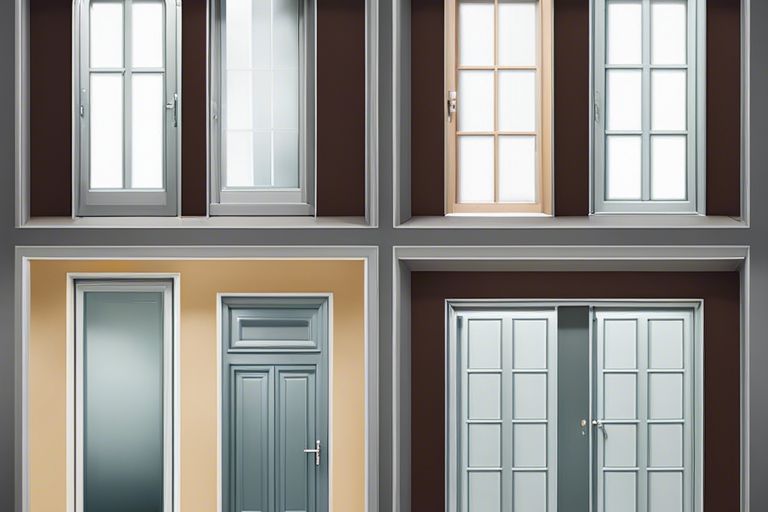In the realm of architecture, curtain walls have revolutionised the way buildings are constructed, offering not just structural support but also aesthetic appeal. However, the engineers, architects, and designers who work tirelessly behind the scenes to develop these innovative facade systems often go unnoticed. This blog post aims to shed light on the unsung heroes who are pivotal in the creation of modern architectural marvels. From conceptualisation to implementation, their expertise and dedication are critical in ensuring the success and safety of buildings featuring curtain walls. Let’s investigate into the fascinating world of curtain wall innovations and discover the masterminds shaping the skylines of our cities.
Key Takeaways:
- Architectural Innovation: Curtain wall systems are a significant architectural innovation that has transformed modern building design.
- Collaboration is Key: Architects, engineers, and manufacturers all play a crucial role in the development of curtain wall systems, showcasing the importance of collaboration in architecture.
- Unsung Heroes: The individuals behind curtain wall innovations, such as fabricators and installers, often go unnoticed despite their essential contributions to the field of architecture.

The Evolution of Curtain Walls
Architecture has come a long way from traditional load-bearing walls to the innovative curtain walls that define the modern skyline. The development of curtain walls has revolutionised building design, allowing for expansive glass facades and creating energy-efficient structures that maximise natural light.
Early Developments in Building Skins
In the early 19th century, iron-framed buildings with glass facades started to emerge, marking the beginning of curtain wall construction. These early structures relied on lightweight materials like cast iron and glass to create a decorative and functional envelope for buildings.
The Crystal Palace in London, constructed for the Great Exhibition of 1851, showcased the potential of structural glass walls in modern architecture. This iconic building inspired architects to explore new possibilities in transparency and aesthetic appeal in building design.
Technological Advancements and Modern Curtain Walls
The evolution of curtain walls continued throughout the 20th century, with technological advancements leading to the use of aluminium frames, insulated glass units, and advanced sealants. These innovations not only improved the strength and durability of curtain walls but also enhanced their thermal performance and weather resistance.
Modern curtain walls are designed to optimise energy efficiency by minimising heat loss and solar gain, reducing the need for artificial lighting and heating. Architects and engineers continue to push the boundaries of curtain wall technology, exploring new materials and sustainable solutions to meet the challenges of contemporary urban development.
The Pioneers of Curtain Wall Design
Architecture has seen many advancements over the years, with curtain walls being one of the most significant innovations. Behind the sleek glass facades that define modern skylines are the unsung heroes of architecture – the pioneers of curtain wall design. These visionaries have revolutionised the way buildings are constructed and have left an indelible mark on the world of architecture.
Visionary Architects and Engineers
The development of curtain walls can be attributed to the creative minds of visionary architects and engineers who dared to challenge the traditional notions of building design. Architects like Joseph Paxton, known for his Crystal Palace design, and engineers like Willis Carrier, who pioneered air conditioning systems, played a crucial role in pushing the boundaries of structural possibilities. Their innovative thinking and technical expertise paved the way for the evolution of curtain walls as we know them today.
These pioneers were driven by a passion for experimentation and a desire to push the limits of architectural design. They were not afraid to explore new materials, construction techniques, and technologies to achieve their vision of creating lightweight, transparent facades that would redefine the aesthetic and functional aspects of buildings.
Collaborative Efforts for Innovation
In the world of curtain wall design, collaboration between architects, engineers, and manufacturers is key to driving innovation. The seamless integration of ideas from different disciplines has led to groundbreaking advancements in material technology, energy efficiency, and structural performance. By working together, these experts have been able to push the boundaries of what is possible in architectural design.
Successful collaborations have led to the development of bespoke solutions for unique architectural challenges, such as creating sustainable facades, maximising natural light, and enhancing thermal insulation. Through open communication and creative problem-solving, these teams have transformed the architectural landscape and continue to inspire future generations of designers and innovators.

The Role of Manufacturers and Fabricators
Behind the breathtaking curtain wall innovations in modern architecture lies the invaluable contribution of manufacturers and fabricators. These skilled professionals play a vital role in turning designers’ visions into reality, pushing the boundaries of what is structurally possible.
Quality Material Production and Sustainability
Manufacturers and fabricators are at the forefront of ensuring that quality materials are produced for curtain wall systems. Their expertise in sourcing and testing materials is crucial for achieving the highest standards of durability and performance. Additionally, their commitment to sustainability drives the use of eco-friendly materials, reducing the environmental impact of architectural projects.
Customization and Implementation of Complex Designs
One of the key strengths of manufacturers and fabricators is their ability to customise and implement complex designs with precision. They work closely with architects to translate intricate designs into feasible solutions, overcoming technical challenges to achieve stunning visual effects. Their attention to detail ensures that each component fits seamlessly into the overall structure, contributing to the aesthetic appeal of the building.
Manufacturers and fabricators are the unsung heroes behind the successful execution of innovative and complex architectural projects. Their expertise in adapting designs to meet structural requirements, while maintaining design integrity, is essential for pushing the boundaries of what can be achieved in modern architecture.
The Future of Curtain Wall Technology
Energy Efficiency and Green Buildings
The future of curtain wall technology is intrinsically linked to the drive for energy efficiency and the construction of green buildings. With the increasing focus on sustainability and reducing carbon footprints, architects and engineers are constantly striving to utilise innovative materials and design concepts to enhance the energy performance of buildings. Curtain walls play a crucial role in this quest, as they can significantly impact the thermal performance and overall energy efficiency of a structure.
By incorporating high-performance glass and insulation materials into curtain wall systems, designers can create building envelopes that offer superior energy performance. This not only reduces the environmental impact of the building but also leads to long-term cost savings for building owners in terms of energy consumption and operational efficiency.
The Integration of Smart Glass and IoT
The integration of smart glass and the Internet of Things (IoT) is set to revolutionise curtain wall technology in the near future. Smart glass can dynamically adjust its tint or opacity in response to environmental conditions, improving daylighting and solar heat gain control. When coupled with IoT sensors and automation systems, smart glass can optimise building performance in real-time, adapting to changing weather patterns and occupancy levels.
By using smart glass in curtain wall systems, architects can create buildings that are not only aesthetically pleasing but also highly functional and sustainable. This integration of smart glass and IoT represents the cutting edge of curtain wall technology, offering unprecedented levels of control and efficiency in building design and operation.

Conclusion: The Unsung Heroes of Architecture – Who is Behind Curtain Wall Innovations?
In a nutshell, the development and innovation of curtain walls in architecture are attributed to a collaborative effort of various professionals working behind the scenes. From architects and engineers to manufacturers and installers, each plays a crucial role in pushing the boundaries of design and functionality. Their dedication and expertise have not only transformed the aesthetics of buildings but also enhanced their sustainability and performance. While the spotlight may not always shine on these unsung heroes, their significant contributions continue to shape the landscape of modern architecture, making the concept of curtain walls an indispensable element in contemporary building design.
FAQ
Q: Who are the unsung heroes behind curtain wall innovations?
A: The unsung heroes behind curtain wall innovations are the architects, engineers, and designers who work meticulously behind the scenes to revolutionise the use of glass, steel, and other materials in architecture.
Q: What role do architects play in the development of curtain walls?
A: Architects play a crucial role in the development of curtain walls by conceptualising innovative designs, selecting suitable materials, and overseeing the construction process to ensure that the final product meets both aesthetic and structural requirements.
Q: How do curtain wall innovations impact the field of architecture?
A: Curtain wall innovations have a significant impact on the field of architecture by allowing for more creative and sustainable building designs, increasing energy efficiency, and improving natural lighting in interior spaces. These innovations also contribute to the overall aesthetics of modern buildings.






